It’s been so long, I’ve almost forgotten. After a (weekend) night next to the barbeque area at Haro with about 2.2 amps of electricity, we dashed off south to get away from the cold weather and the crowded site. And to find the other 13.8 amps!
Campsites are few and far between in Spain – certainly compared to France. I guess this is something to do with the towns being well spaced out with miles and miles of not much in between.
But it’s not just that. The Spaniards’ camping habits are different from those of most of the French. Spanish campers like to descend in enormous numbers on a Friday, crowd together in small spaces, turn up the radios and then shout at each other to make themselves heard over the radio (and the other Spaniards). At 10 PM they start cooking and continue shouting at each other till the early hours when the children are eventually rounded up, given a glass of vino tinto and put to bed. On Sunday they all vapourise leaving empty campsites. The whole country only needs 50 or so campsites to cope with this pattern of camping. Hence another reason for the scarcity of places to park our caravan.
I am, of course, discounting the million and a half coastal sites which are largely full of Brits and Dutch at this time of year. “Not staying in one of those, Barry!”
Anyway we ended up in the mountains North of Madrid at a delightful (if expensive), peaceful (during the week) site. Camping Monte Holiday near Gargantilla del Lozoya.
From here, and in no particular order, we walked along the banks of the local reservoir lake, the Embalse de Pinilla.
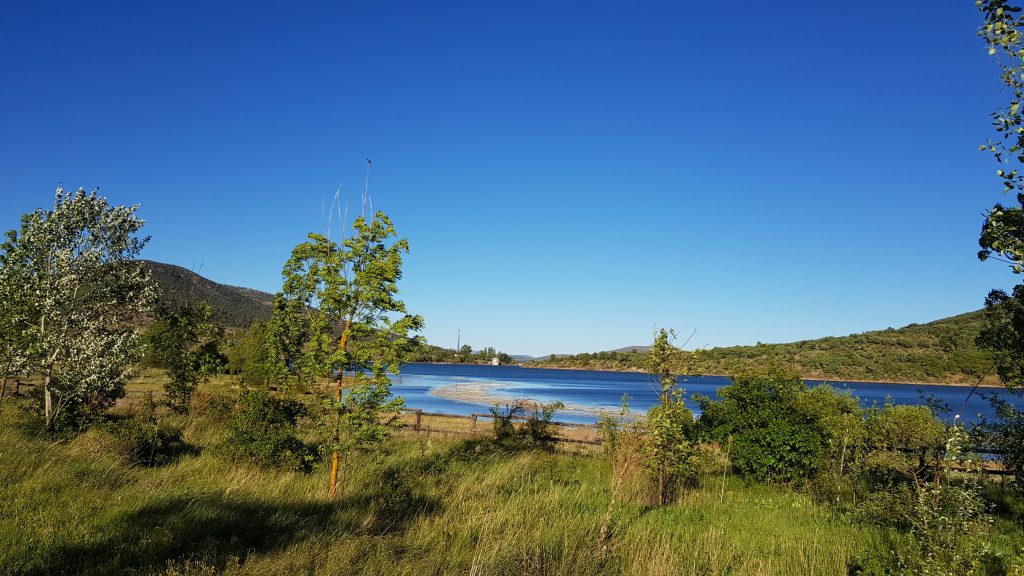
The path goes much further than we needed for our evening strolls. There was a handy bar/restaurant in a field at the upstream end of the lake about 250 kms from the nearest town. They served a jolly nice beer at the end of our early evening ramble as the sun set over the mountains.
Did I mention that we were camped in what was basically a high-country valley with one way in and four mountain passes out. Even the way in peaked at 1750 m. The first pass we explored took us over the northern ridge on our way to the forgotten villages of the Segovia district. We took a circular route via Navafria, Requijada, Pedraza and Gallegos.
The first was a sleepy little place. We parked in the centre of town and waited to see if indeed EVERYONE had forgotten the place. After 30 minutes consuming coffees in the local “restaurant” we concluded that all but four people (and us) had done so!
On to find La Casona de Requijada. This was a little rural hotel that Glenda had read about in the newspaper some time ago. We spent a happy half hour driving (extremely cautiously) around the tortuous, winding, extremely narrow, cobbled streets of the village. We saw one old geezer sitting outside his house. In fact we saw him five times as we crissed and crossed the tiny place. To get this in perspective, nowhere is further than 100 m from the geographical centre of “town”. AND we had the address of the Casona in the sat nav! We had to push goats and geese off one “road” before Glenda said “it can’t be down this alley!”
Anyway, to cut a long story slightly short – on the third attempt at the geese and goats it WAS indeed down that alley. We found the gate. Unlocked it and drove up the drive. The place was, predictably, deserted. So we admired the owners garden, her statues and outdoor fireplace a while. Then we unlocked the gate again and left.
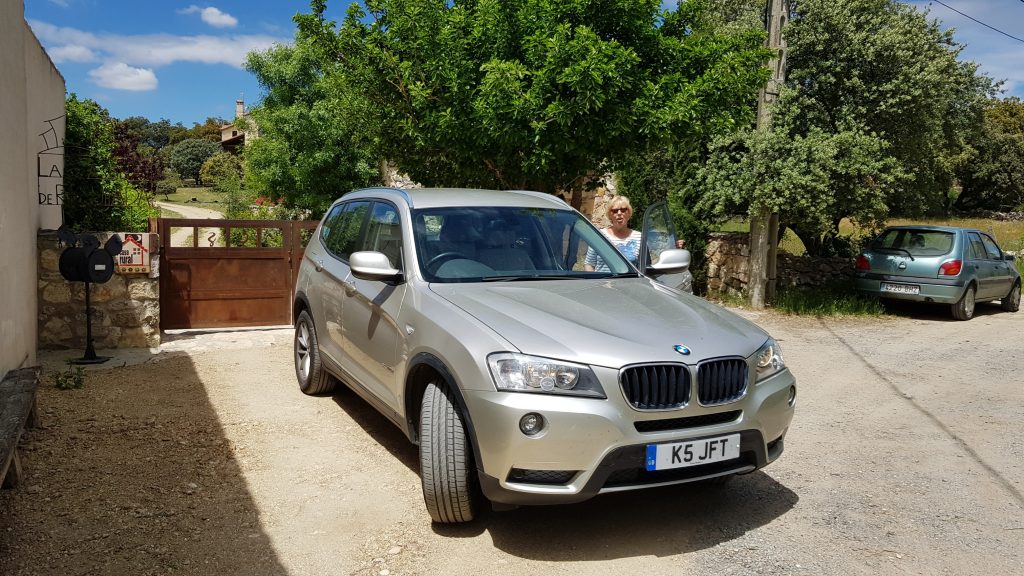
It was at this point that Glenda admitted that the people who wrote the article about the hotel had arrived on donkeys! She said that she didn’t tell me before in case I refused to even look for the village, let alone the Casona itself! Maybe she had a point!
Pedraza proved rather different.
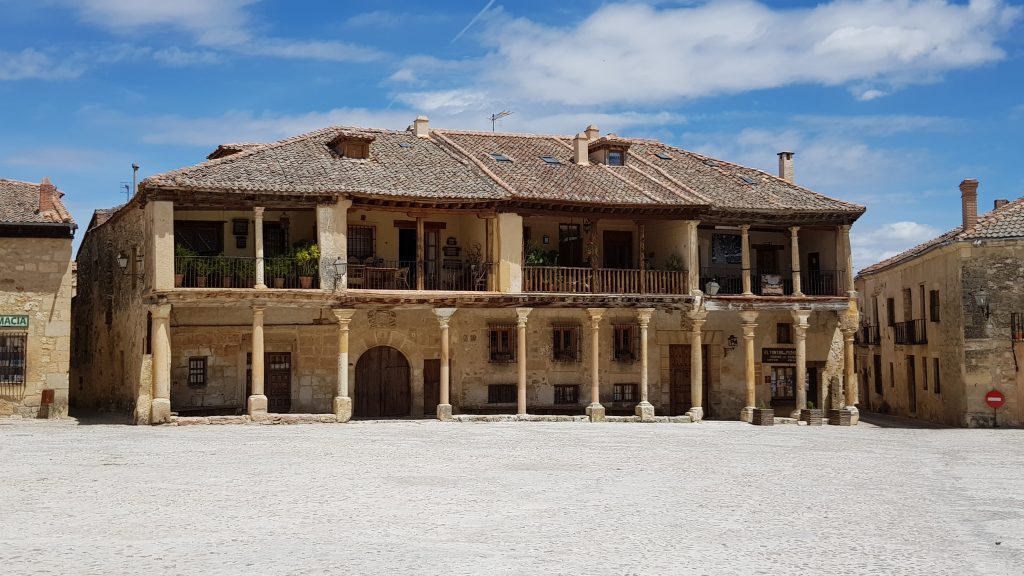
It was a pretty, fortified hill-top town with some amazing old houses around the central square. One of these is a restaurant – El Soportal – which just had to be tried out!
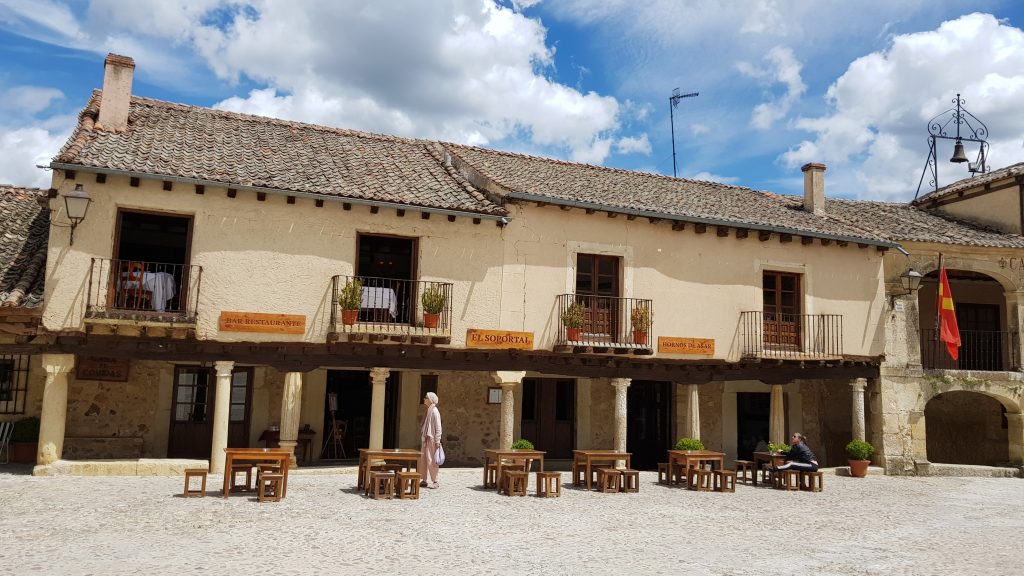
Our table was just inside the second window from the left. The chef had an enormous wood-fired oven (like a pizza oven on steroids) in the middle of the restaurant. Everything was cooked in this huge cavern. Very good, but as I had a long drive home, Glenda got the lion’s share of the bottle of wine. This meant she was asleep by the time we got to the last of the four villages. And this one, although closest to the “main” road through the region, was truly forgotten. I did a drive through. In and out in four minutes. Day over!
The second exit pass was the highest at 2000 m. This was the way to Segovia – and that was where we were headed – which was lucky! Actually it turned out to be a double pass. At the first – the Cotos Pass – there was an attractive cafe and bar. It certainly attracted us. The second and slightly higher of the two, the Pass of Navacerrada, was the location of a ski area. It looked a bit limited with only a couple of lifts and maybe three or four pistes. Anyway, there was no snow – so no skiing.
This was where we joined one of the country roads from Madrid to Segovia. Wending down the mountain, we came to the snappily named town of Real Sitio de San Ildefonsa, home of the Palacio Real de la Granja de San Ildefonsa. For some reason, this one-time royal palace is more commonly known simply as La Granja. Worth a quick visit. So we pulled off the road and immediately drove through the palace gates. “I don’t think we can park in here, Barry!” But we could and we did.
Using our passports as evidence of EU citizenship we were allowed in as over 65s. (Peculiarly, we didn’t need to prove our age qualification! Can’t imagine why!). This has to be one of the best €4 worth in Spain! Our one hour tour turned into five hours. The palace itself was spectacular with fabulous ceiling painting and decorations, with massive hanging tapestries on the walls. Sadly, no photos allowed inside.
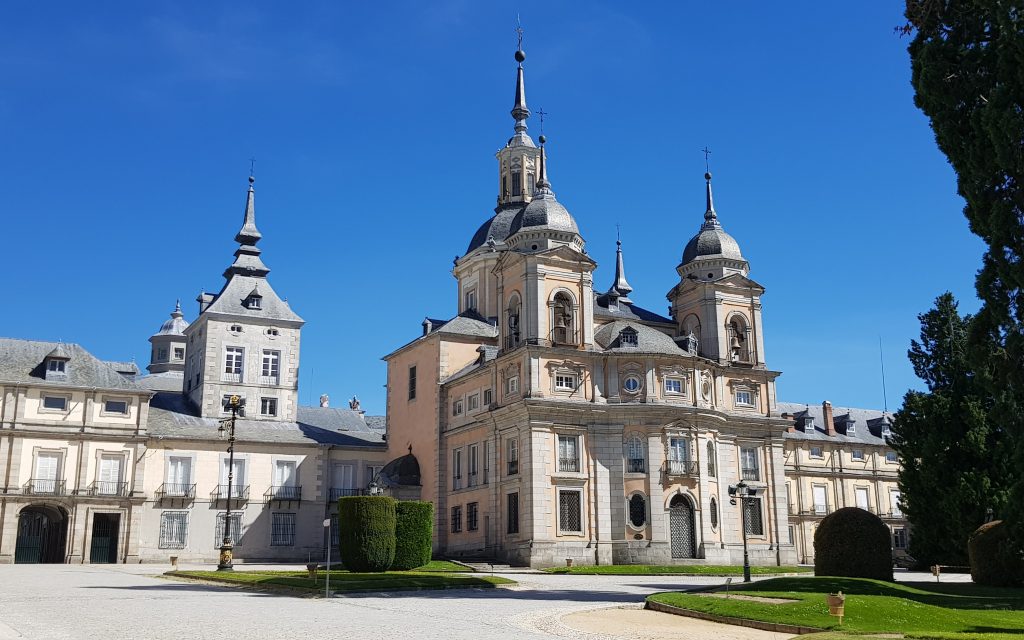
The view of the chapel at the palace entrance…
… and the back door …
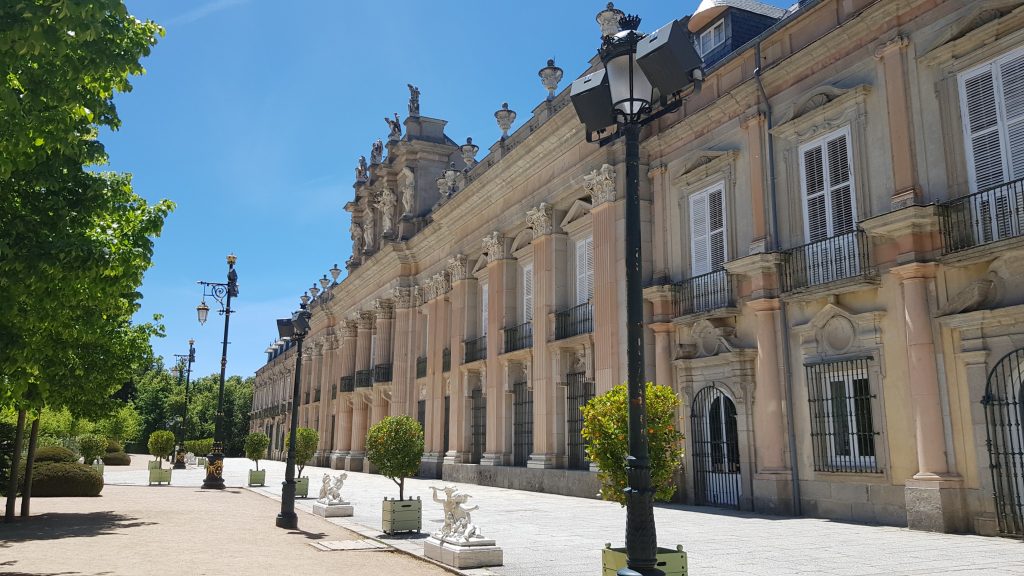
The gardens were massive. With highly formal areas laid out with influence from Versailles.
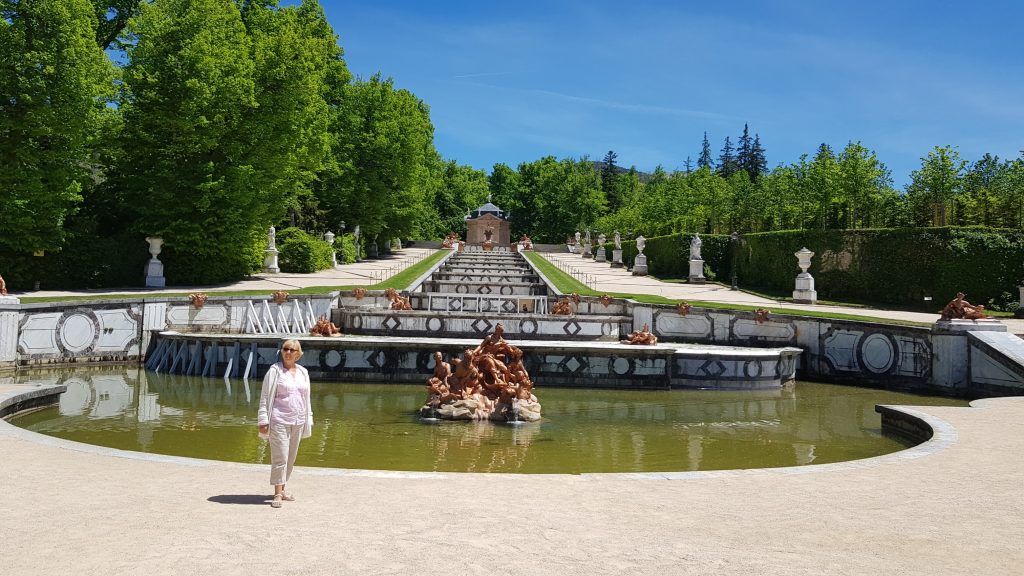
There were dozens of fountain statues and regular pathways laid out to join these. You could always see at least two fountains and at the junctions theoretically up to eight.
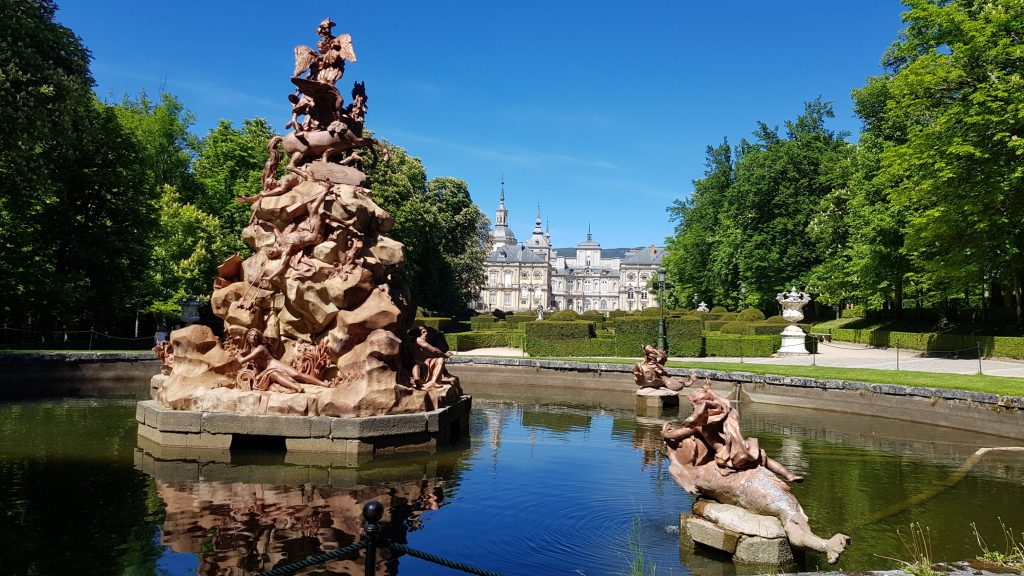

That was my attempt at a 360° panoramic shot where eight paths meet. I think Glenda is in there twice!
All the fountains were fed from a large lake at the foot of the mountains immediately behind the back garden. The king used to keep his royal barge up here!
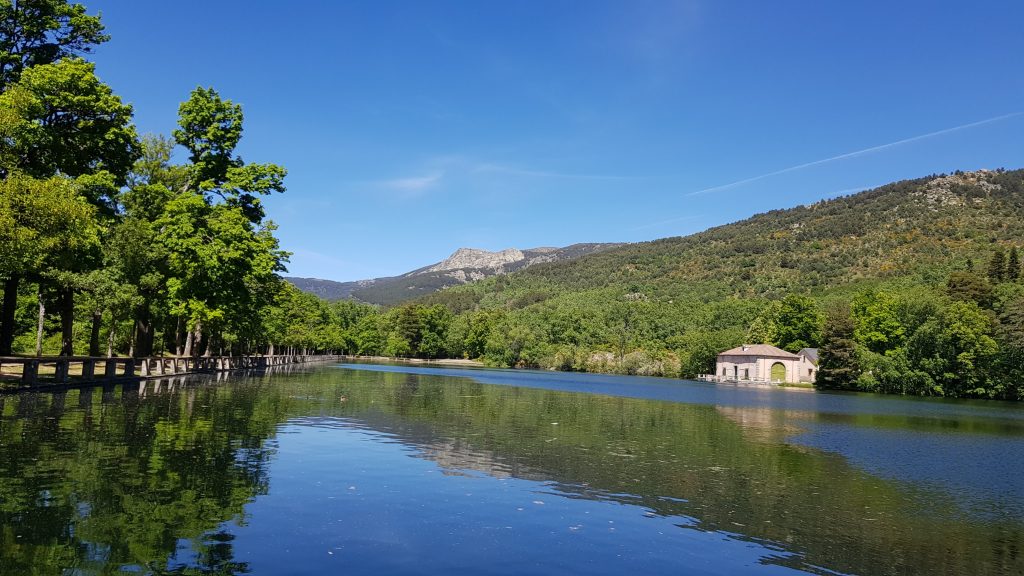
Anyway, suffice it to say that by the time we left the palace it was time for home. Segovia will have to wait for another day. As will everything else…
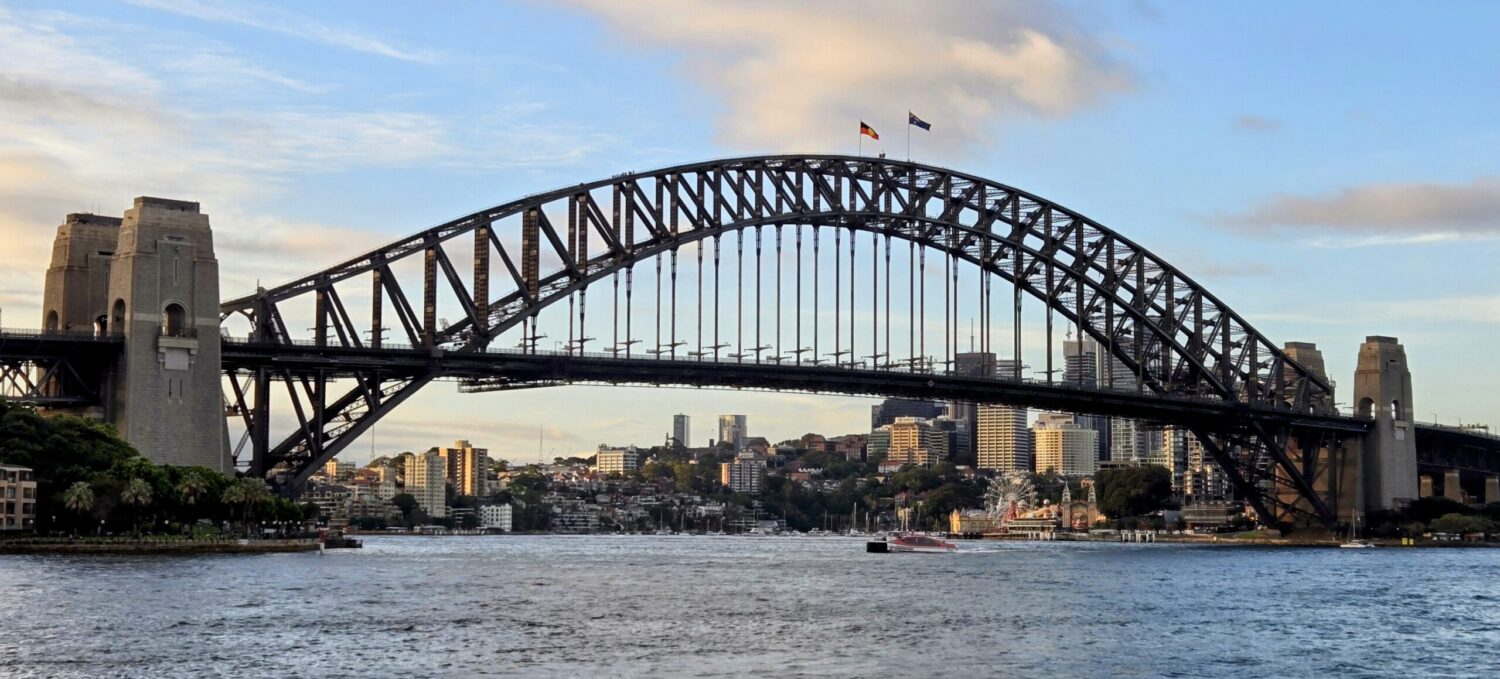
Found most of the places you visited on Google maps but have no idea on the distance travelled. How far was it?